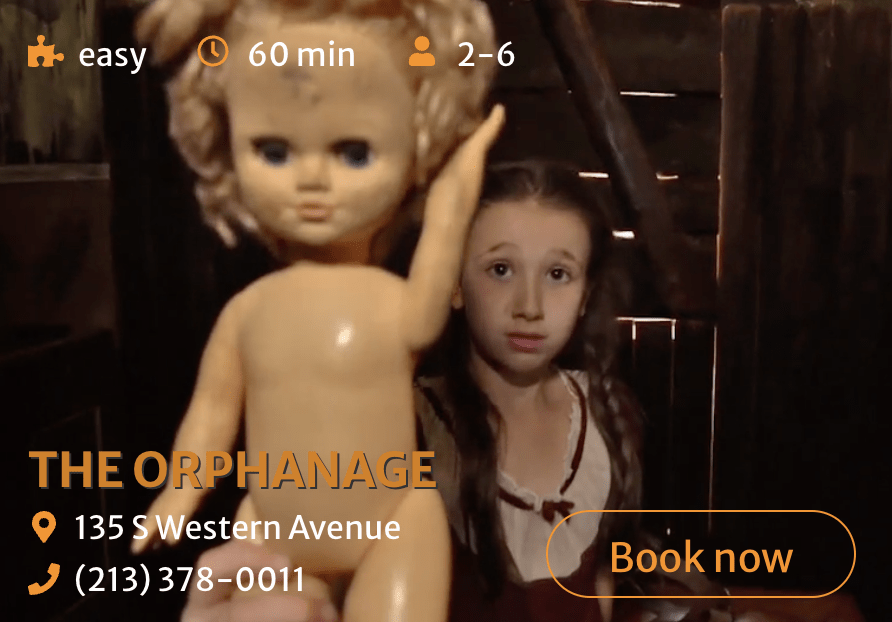Since we are making a physical escape room, I wanted to write about an escape room I did with my friends recently that focused on solving a mystery – The Orphanage by 60Out Escape Rooms. This is a physical escape room with three rooms to explore, connected by a hallway. The target audience according to their website is 10 years old and up, and is meant for 2-6 players. We played with 4!
The premise of the escape room, which we were told upon entering, is that an orphanage is found abandoned with no trace of the children inside. Our job is to figure out what happened to the children using clues in the room. This game featured several puzzles, mostly involving looking for keys and codes to put in locks. The puzzles themselves were usually simple pattern recognition and not that difficult (such as sliding a plastic knife into a hole in the bedframe according to the patterns on a map or reaching into a “dead body”‘s mouth to retrieve a key). However, we were never bored! The room did a great job in creating a horrifying, creepy vibe by juxtaposing death, darkness, and cult imagery with innocuous children’s items. The clues eventually led us to a secret office, where it’s revealed that the director of the orphanage is part of a cult, and the children have been sacrificed. By matching patterns in a journal to missing pieces of a symbol on a wall, we were able to “free” the souls of the murdered children so they could be at peace.
This game focused mostly on narrative, fantasy, and fellowship. The mystery was enhanced by wrapping puzzles we see a lot in escape rooms in the context of an immersive horror setting – by feeling like we were trapped and in danger, we were able to imagine that we were actually working together to reach the goal of figuring out what happened to the kids. In this regard, the room succeeded in accomplishing its goals! Our moments of success in this game relied less on finding out the right answer or even solving the mystery – in fact, it was simply when we were laughing at something that happened or growing closer. For example, one of our friends reached into a hole in the wall, where the plastic “body” of a dead child fell out with a key in its mouth. Yes, it was cool that we got the key, but it was an even better memory when we were all laughing together about how scary that just was, and how scared our friend looked! In my opinion, that’s the beauty of escape rooms over other types of games – they create memories that involve all the senses, not just conversations.
If I were to change something about this escape room, I would make the puzzles reveal the larger story more, rather than the story being revealed just by looking at the rooms and the puzzles being a way to get there. I actually preferred exploring the rooms much more than the puzzles, and it would be great if both aspects of the game were equally as fun!



